Barrelponics:
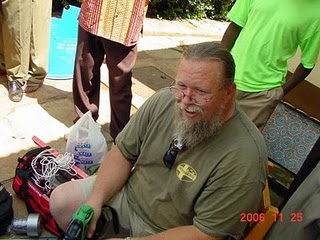
April 2011:
-
8 rain water barrels, 3 for me and the rest for friends and spare parts. They came between $5.00 and $20.00 each, delivery included.
-
The big Tupperware container was given free and wil serve as hatchery.
- The aquarium was left in a back alley and will be used for for quarantining fish.
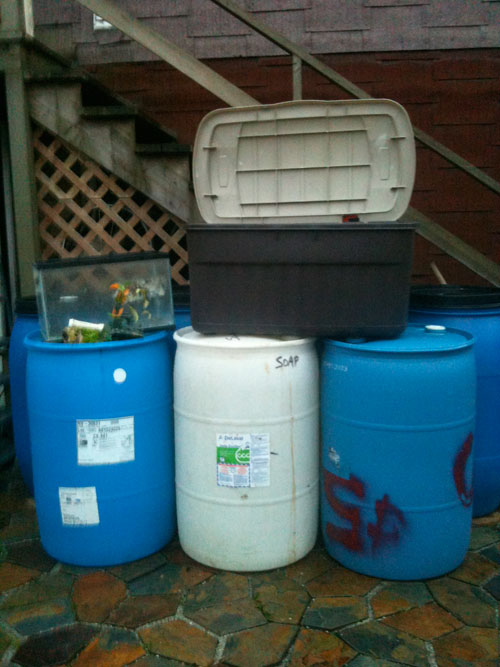
May 2011:
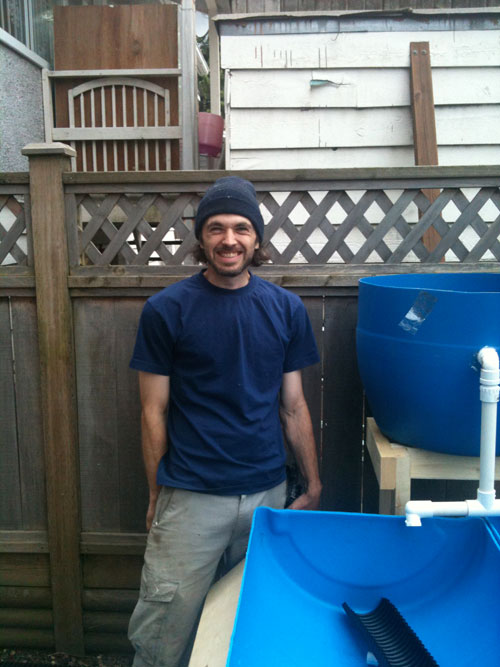
Andrew Chapman, 778 887 5069, truelifepath @ gmail.com
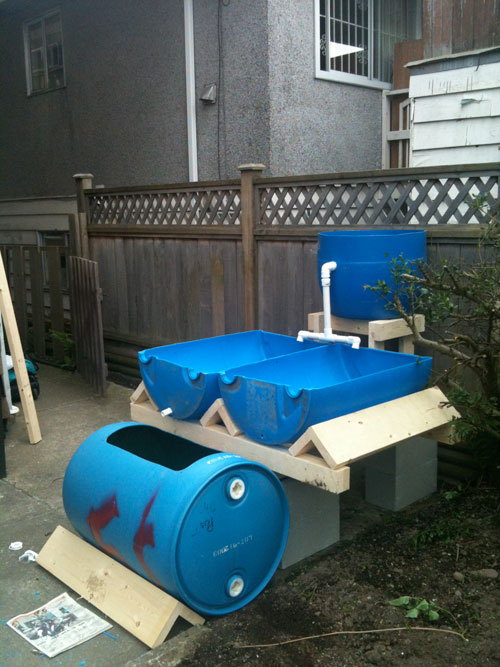
System ready without the pump. Labor, including sourcing, pick up, delivery and set up: 8 hours.
Note the bottom bunghole, this is where where installed the first pipe to go to the pump.
Now, all I could find in time and under budget was a submersible pump used for ponds. I won't tell you the brand.
Installing the pump inside the fish tank would be a bad idea, since it would stress the fish, and make any maintenance or emergency repair pretty messy.
Not inluding the fact that if the pump's engine fries - as mentioned 3 times in the pump's flyer - it would eletrocute all my fish.
No problemo: I also had a smaller barrel available.
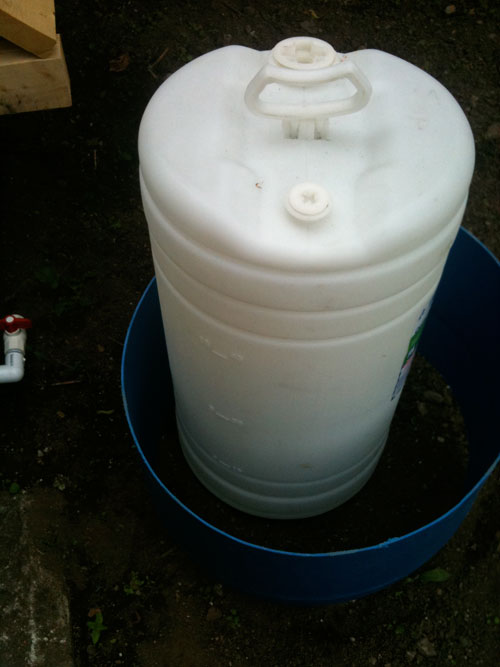
Modification #1
Put the pump inside its own pumping station away from the aquarium.
All it required was 1 big hole to slide the pump in and out and a smaller hole to bring the aquarium's water into the pump station.

Note: since we had already installed a water pipe for the pump we had to trade the first bung hole for another one.
Guess what? The 2 bunholes in a rain water barrel are not the sames.
In other words, make sure you have an extra barrel for extra bungholes.
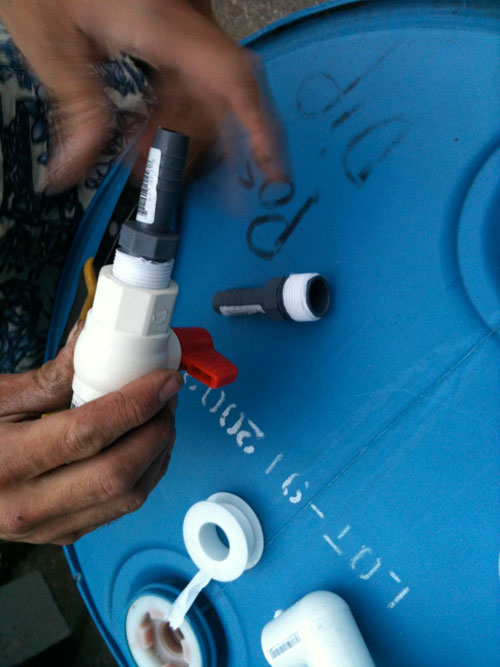
Modification #2
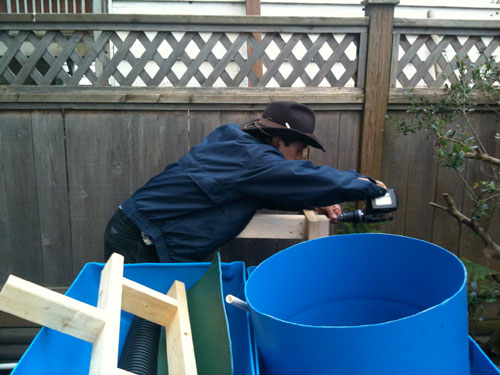
Widen the base for the water reservoir so the pump station is under it and does not require any extra space.
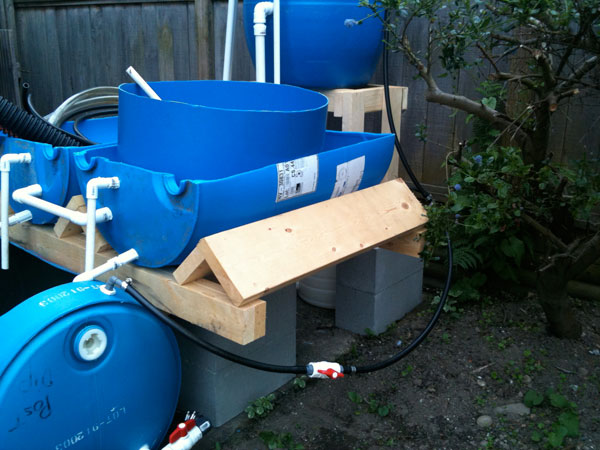
Here it is, installed in the back.
The water comes from the fish station at the bottom right goes through a tube under the set up, and goes into the pump station.
From the pump station it can return to the fish station for oxygenation, and back up to the reservoir.
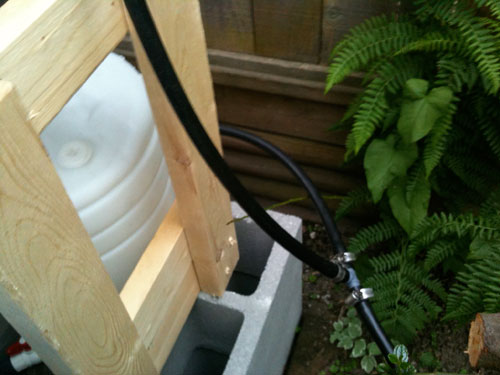
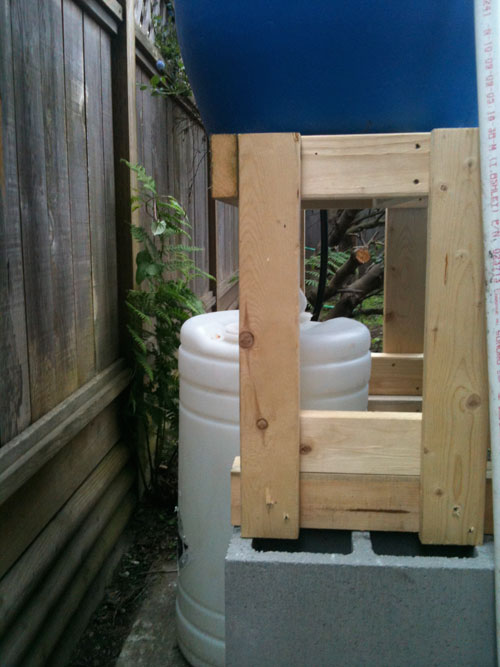
Now, Modification #3
The original barrelponic system is planned for a ebb and flow system, with a very simple flushing system.
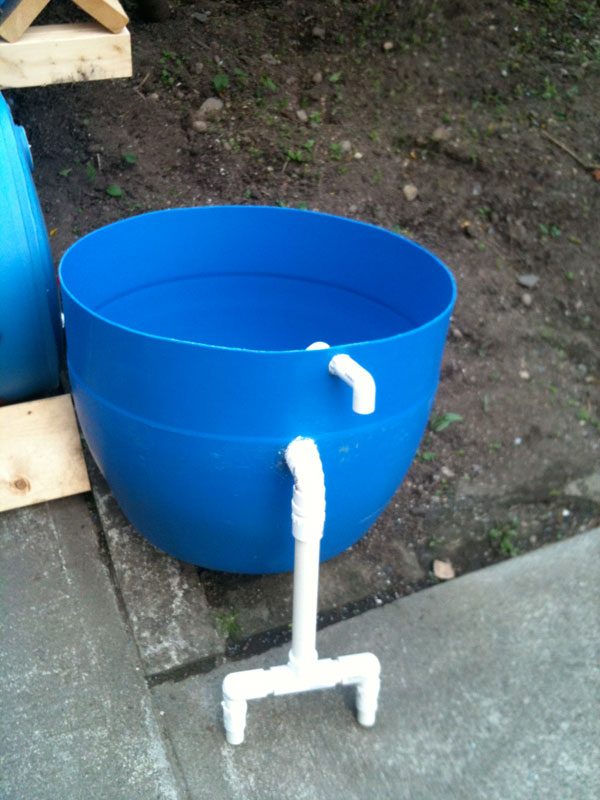
While in Hawaii I learned the benefits of having a constant flow go through the growing beds: less spikes in the nitrates and nitrates levels, higher oxygen level - and food quality and easier feeding for the plants.
Here it is, simple, easy to adjust, and no need for extra bottle, plunger etc.
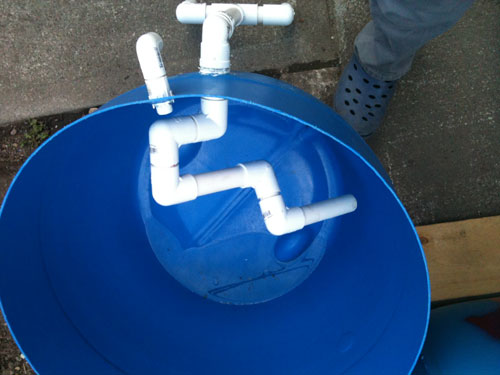
Ready for the fish.
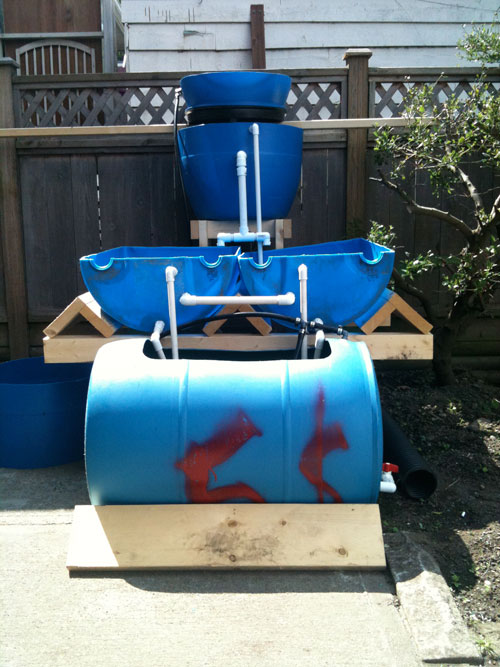
Moving July 1st.
Tilapia fry being raised by Jodi Peters and Jeffery Radke from Backyard Bounty Collective, who also have a system.
|